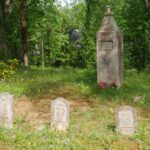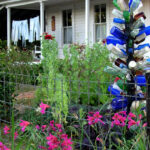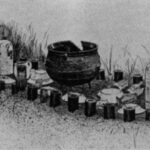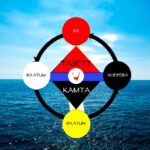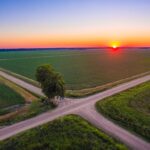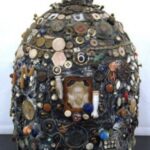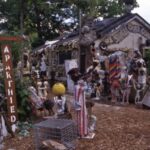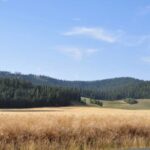Lesson 4: The Maa Aankh
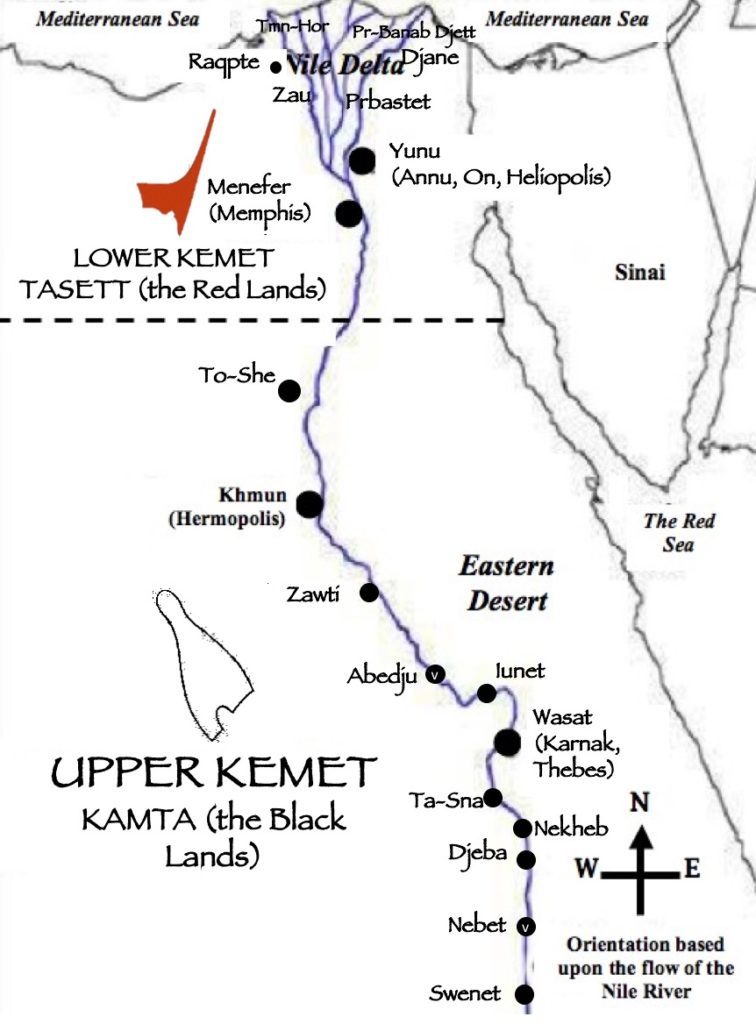
In predynastic Kemet, the Kemetic people had created their entire culture on the north-flowing Nile River. The southernmost part of the region, which was symbolized as the white Hedjet crown, was known as Upper Kemet. This region was called KMT, Khem Ta, or KAMTA, which literally means “the black lands” and is a reference to the fertile black silt that remained on the land after the annual inundation of the Nile.
The northernmost part of the region was known as Lower Kemet and symbolized by the red Deshret crown. This region was called Ta Sett or TASETT because the soil was arid, dry, and red.
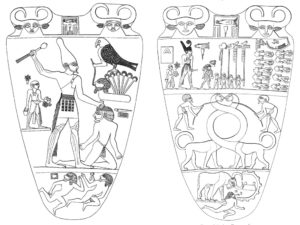
Together these two regions were called the Two Lands and were recognized as such until the southern predynastic King Narmer (also known as Menes) united the two regions into one kingdom, thus becoming the first ruler of Kemet (See Narmer Palettes above).
These Two Lands metaphorically and metaphysically can be symbolized as follows:
Since we stand on the shoulders of our ancestors, as mentioned in the Intro. to the Maa Aankh, the Maa Aankh is based upon the Kemetic (Ancient Egyptian) theology but, inspired by the Kongo cosmogram called the dikenga dia Kongo or tendwa kia nza-n’ Kongo in KiKongo and commonly known as the Kongo Cross. Since according to art historian Robert Farris Thompson who states in his book The four moments of the Sun: Kongo Art in Two Worlds that the Kongo Cross was “Coded as a cross, a quartered circle or diamond, a seashell spiral, or a special cross with solar emblems at each ending – the sign of the four moments of the sun is the Kongo emblem of spiritual continuity and renaissance par excellence. ” The Maa Aankh draws from the classic iconography and becomes the following:
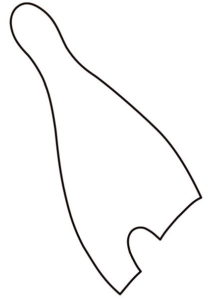
The bottom half of the cosmogram is called KAMTA (the Black Lands) but the Black Lands it refers to is the invisible, mysterious, unknown, and the dark Land of the Spirits. Both terms dark and black does not mean evil or low but signifies the inability to physically see for the lack of a better word “things”. KAMTA is home to all the beings that do not have a physical body, hence Spirits.
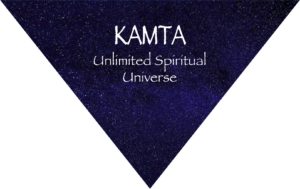
KAMTA is symbolized as a downward pointing triangle to remind us to go within to tap into our Superconscious. To look beyond the physical and remember that the physical realm is subjective. To access the memories of our Ancestors, Spirit Guides, and Guardian Spirits we need to cross the threshold and elevate our consciousness. Therefore, any area that is strange, unknown and mysterious is considered to be a metaphorical representation of KAMTA.
Historically this region was the southernmost part of Kemet and symbolized by the white Hedjet crown.
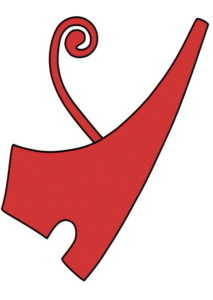
The top half of the diagram is called TASETT (the Red Lands) but is a reference to the visible, gross, known, the light, and the Land of the Living. In other words, this TASETT symbolizes everything that we physically know, and everything that has an internal clock, hence physical life.
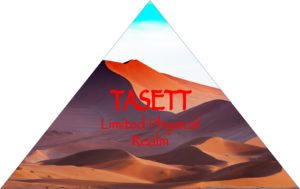
TASETT is symbolized as an upward-pointing triangle to remind us that the physical realm is an illusion, and. So that we do not forget that “all (physical) things” come from “no-things.” In other words, the physical realm emerged from the invisible spiritual realm. Therefore, any area that is familiar and visible and is considered to be a metaphorical representation of TASETT.
Historically this was the northernmost part of Kemet symbolized as the red Deshret crown.
The blue vertical line called Nyun (the chaotic primordial waters of nothingness) separates and veils KAMTA (the invisible Spiritual realm) from TASETT (the visible Physical realm). Nyun makes KAMTA (the spiritual world below) and TASETT (the physical world above) like two reflective mirrors parallel to one another, polar opposites.
While the horizontal line called the Maa (balance, law, order, and truth) connects and ties KAMTA and TASETT together so that what exists above is mirrored below and vice versa. Those who understand how KAMTA and TASETT are connected know that the solutions to all of life’s problems can be found in KAMTA. For instance, the problem with western medicine is that it only addresses the physical nature of the illness, and ignores the spiritual side. For there to be a complete cure, the medicine must be used to address the physical ailment, while prayer, meditation, rituals, etc., are used to address the root cause of the illness. This is the only way Maa (balance, harmony, etc.) can be restored.
Surrounding KAMTA and TASETT are the Four Ras (or the Four Divine Powers of God) symbolized as the Sun and represents the soul’s flight in the cycle of life. Moving counter-clockwise they are:
- KhepeRa (The Creative Ra/Sunrise/Birth/Kala in KiKongo) symbolized as a scarab beetle and the color black. Khepera also represents Infants (Children), the Air element, the East direction, and the Spring months.
- Ra (The Visible Ra/Midday/Life/Tukula in KiKongo) symbolized as a hunting hawk and the color red. Ra also represents Adolescences (Young Adult/Adulthood), physical prowess, maleness, the Fire element, the North direction, and the Summer months.
- Ra Atum (The Changing Ra/Sunset/Death/Luvemba in KiKongo) is symbolized as an aging man and the color white. Ra Atum also called Atum Ra represents the Elderly, the Earth element, the West direction, and the Autumn/Fall months.
- Amun Ra (The Hidden Ra/Midnight/Rebirth/Musoni in KiKongo) as a mountainous ram and the color yellow. Amun Ra also represents Spirits of the Dead (Ancestors, Spirit Guides, Guardian Spirits, Saints, etc.), spiritual prowess, femaleness, the Water element, the Southern direction, and the Winter months.
Therefore, our Universe is composed of two worlds or Two Lands: a spiritual world/land below and a physical world/land above. This means that generally speaking when the sun rises, Khepera wakes up everything with a physical body. Everything in TASETT becomes active, lively, and full of energy or work, which becomes increasingly aggressive, competitive, and peaks at midday while being overseen by Ra. Then, as the sun sets in the evening, the energy wanes as Ra Atum prepares our body to be reborn.
While on the other side of the veil in KAMTA, the Spirits are awakened when Ra Atum enters their realm. Their spiritual energy peaks at midnight, which is the Amun Ra moment where our physical body is being reborn, hence the non-REM state. Then, when the midnight sun falls, which is governed by Khepera. The Spirit activity declines as the Living welcomes Khepera who brings a new day.
Those respecting the allusiveness of the Maa Aankh will view the center of the cosmogram as a source of firmness because it represents where the Two Lands meet. Although historically this moment or point was symbolized by the double white and red Pschent crown, thus indicating that the Two Lands where united. Culturally speaking what this means is that when an individual suffered graved misfortunes and remarkably recovered from the grave experience. It was interpreted as the whiteness of the Ancestors washing away the impurities from the living land.
This means for those who interpret the Maa Aankh alongside the Story of Osar. That like the hero Hru (Horus), every time he or she experiences hardship, problems, gross misfortunes, ill-ness, etc. It is so that they can be spiritually reborn as Maa Kheru (One Who Speaks True of Word) and help others.
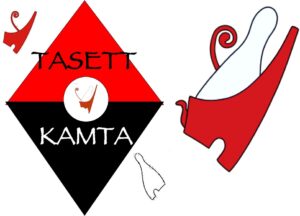
For instance, it used to be the cultural norm in some West and Central Afrikan villages. That when an individual involved in a legal trial was found to be innocent. The entire village would be decorated in white to symbolize that the knowledge, wisdom, power, coolness, mysteriousness, and whiteness of the Ancestors has restored righteousness to the Land of the Living. An individual falling deathly ill and recovering from the ill-ness as a forever changed individual, is seen as someone who traveled to the Land of the Spirits and the knowledge, wisdom, power, coolness, mysteriousness, and whiteness of the Ancestors has “touched” them, which is indicated by the cured individual’s uncanny personality.
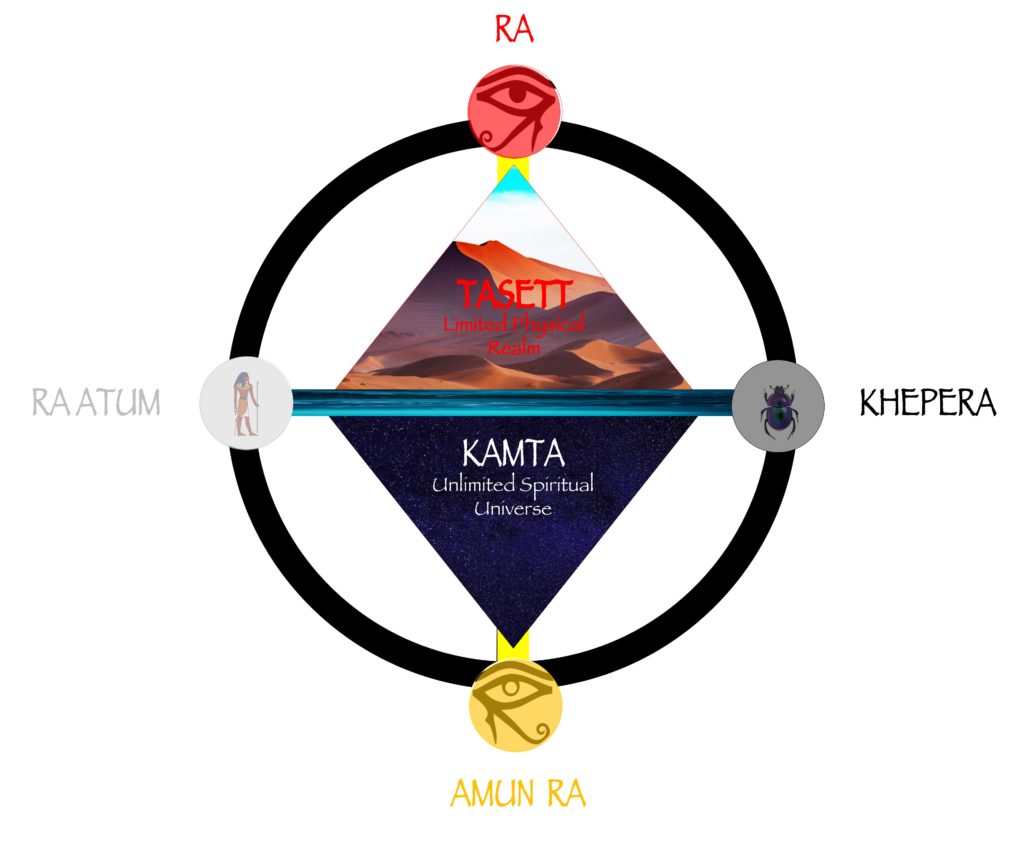
The Maa Aankh exists wherever Two Lands meet. There is always an unknown/known, an invisible/visible, a dark/light, and so on, which means the ultimate goal is to stand on the edge of both in harmony as Hru. For examples, see the gallery below.


